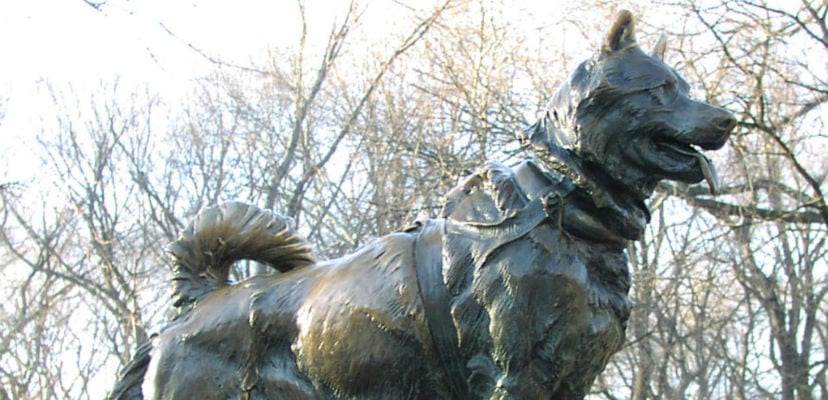
There are many stories that circulate about Balto, the mythical wolfdog that saved the lives of hundreds of people in Nome (Alaska). Today he is remembered as a great hero who was able to bring food and medication to large numbers of children suffering from diphtheria. There are many commemorations created in his honor.
Balto was a mongrel between Siberian Husky and wolf who was born in the small town of Nome, in 1923. Only two years later, in early 1925, diphtheria began to attack children in the area, so hospitals began to urgently demand medication. More than 1000 miles from town, in the city of Anchorage, the closest vaccines were found, but severe snow storms prevented transportation.
No traditional method could withstand the terrible weather conditions, and the town seemed completely doomed by the epidemic. It was then that one of its inhabitants, called Gunnan kaasen, proposed to travel with his team of dogs. The plan was to carry the drugs on a sled pulled by more than 100 dogs, including Balto.
According to some versions, he guided the rest of the dogs all the way, but others say that he actually took the place left by the first guide, who broke his leg. Thanks to the work of all this team, the vaccines were able to reach their destination and stop the epidemic, although it was Balto's name that went down in history. And it is that the fact that a half wolf dog was capable of carrying out the orders of a human being was especially striking.
The international press echoed this story, and shortly thereafter it would become Central Park from New York a statue dedicated to the hero Balto, by FG Roth, accompanied by an inscription that reads: "Resistance - Fidelity - Intelligence". He also has another famous statue in his hometown.
In 1927, both Balto and his fellow travelers were sold to the Cleveland Zoo, where he would spend his last years. He died on March 14, 1933, leaving a beautiful story behind him. It was embalmed, and today it is on display in the Cleveland Museum of Natural History. In addition, his story has been made into a movie three times.